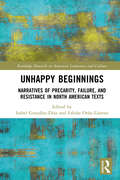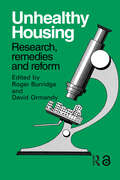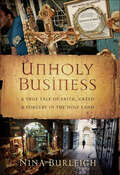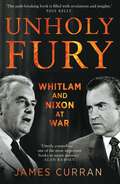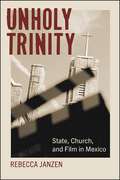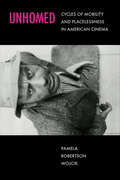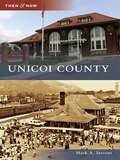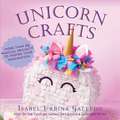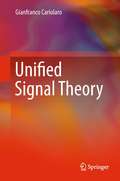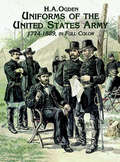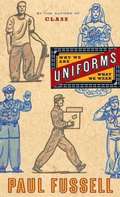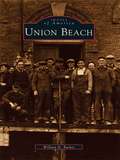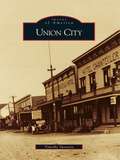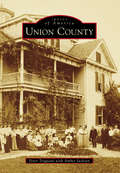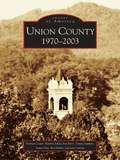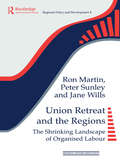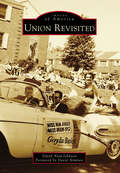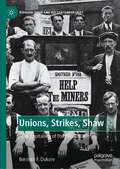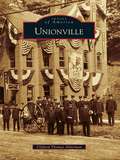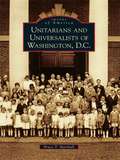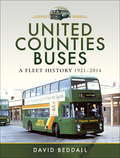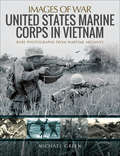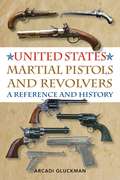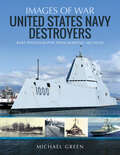- Table View
- List View
Unhappy Beginnings: Narratives of Precarity, Failure, and Resistance in North American Texts (Routledge Research in American Literature and Culture)
by Isabel González-Díaz Fabián Orán-LlarenaThis book offers the analysis of a selection of North American texts that dismantle and resist normative frames through the resignification of concepts such as unhappiness, precarity, failure, and vulnerability. The chapters bring to the fore how those potentially negative elements can be refigured as ambivalent sites of resistance and social bonding. Following Sara Ahmed’s rereading of happiness, other authors such as Judith Butler, Wendy Brown, Jack Halberstam, Lauren Berlant, or Henry Giroux are mobilized to interrogate films, memoirs, and novels that deal with precarity, alienation, and inequality. The monograph contributes to enlarging the archives of unhappiness by changing the focus from prescribed norms and happy endings to unruly practices and unhappy beginnings. As the different contributors show, unhappiness, precarity, vulnerability, or failure can be harnessed to illuminate ways of navigating the world and framing society that do not necessarily conform to the script of happiness—whatever that means.
Unhealthy Housing: Research, remedies and reform
by R. Burridge D. OrmandyUnhealthy Housing presents an analysis of the research into the health implications of housing and the significance for legal regulation of housing conditions. Key experts present short papers, together with an overview to give an evaluation of the significance of housing on the health of occupiers.
Unholy Business: A True Tale of Faith, Greed & Forgery in the Holy Land
by Nina BurleighIn 2002, an ancient limestone box called the James Ossuary was trumpeted on the world's front pages as the first material evidence of the existence of Jesus Christ. Today it is exhibit number one in a forgery trial involving millions of dollars worth of high-end, Biblical era relics, some of which literally re-wrote Near Eastern history and which could lead to the incarceration of some very wealthy men and embarrass major international institutions, including the British Museum and Sotheby's. Set in Israel, with its 30,000 archaeological digs crammed with biblical-era artifacts, and full of colorful characters—scholars, evangelicals, detectives, and millionaire collectors—Unholy Business tells the incredibly story of what the Israeli authorities have called "the fraud of the century." It takes readers into the murky world of Holy Land relic dealing, from the back alleys of Jerusalem's Old City to New York's Fifth Avenue, and reveals biblical archaeology as it is pulled apart by religious believers on one side and scientists on the other.
Unholy Fury: Whitlam and Nixon at War
by James CurranIn the early 1970s, two titans of Australian and American politics, Prime Minister Gough Whitlam and President Richard Nixon, clashed over the end of the Vietnam war and the shape of a new Asia. A relationship that had endured the heights of the Cold War veered dangerously off course and seemed headed for destruction. Never before—or since—has the alliance sunk to such depths.Drawing on sensational new evidence from once top-secret American and Australian records, this book portrays the bitter clash between these two leaders and their competing visions of the world.As the Nixon White House went increasingly on the defensive in early 1973, reeling from the lethal drip of the Watergate revelations, the first Labor prime minister in twenty-three years looked to redefine ANZUS and Australia's global stance. It was a heady brew, and not one the Americans were used to. The result was a fractured alliance, and an American president enraged, seemingly hell bent on tearing apart the fabric of a treaty that had become the first principle of Australian foreign policy.
Unholy Trinity: State, Church, and Film in Mexico (SUNY series in Latin American Cinema)
by Rebecca JanzenRebecca Janzen brings a unique applied understanding of religion to bear on analysis of Mexican cinema from the Golden Age of the 1930s onward. Unholy Trinity first examines canonical films like Emilio Fernández's María Candelaria and Río Escondido that mythologize Mexico's past, suggesting that religious imagery and symbols are used to negotiate the place of religion in a modernizing society. It next studies films of the 1970s, which use motifs of corruption and illicit sexuality to critique both church and state. Finally, an examination of films from the 1990s and 2000s, including Guita Schyfter's Novia que te vea, a film that portrays Mexico City's Ashkenazi and Sephardic Jewish communities in the twentieth century, and Carlos Carrera's controversial 2002 film El crimen del padre Amaro, argues that religious imagery—related to the Catholic Church, people's interpretations of Catholicism, and representations of Jewish communities in Mexico—allows the films to critically engage with Mexican politics, identity, and social issues.
Unhomed: Cycles of Mobility and Placelessness in American Cinema
by Pamela Robertson WojcikIn this rich cultural history, Pamela Roberston Wojcik examines America's ambivalent and shifting attitude toward homelessness. She considers film cycles from five distinct historical moments that show characters who are unhomed and placeless, mobile rather than fixed—characters who fail, resist, or opt out of the mandate for a home of one's own. From the tramp films of the silent era to the 2021 Oscar-winning Nomadland, Wojcik reveals a tension in the American imaginary between viewing homelessness as deviant and threatening or emblematic of freedom and independence. Blending social history with insights drawn from a complex array of films, both canonical and fringe, Wojcik effectively "unhomes" dominant narratives that cast aspirations for success and social mobility as the focus of American cinema, reminding us that genres of precarity have been central to American cinema (and the American story) all along.
Unicoi County
by Mark A. StevensThe rushing Nolichucky River cut deep gorges into Unicoi County's landscape, and the railroad laid track for the town of Erwin's future. Formed in 1875, Unicoi County's 201 square miles border North Carolina, with nearly 50 percent of the land protected by the U.S. government. Known as "the Valley Beautiful," this community comes alive through images of yesterday and today.
Unicorn Crafts: More Than 25 Magical Projects to Inspire Your Imagination
by Isabel Urbina GallegoOver 25 magical projects with easy-to-follow instructions!Welcome to the world of Unicorns! We love these magical and mythical horned creatures that inspire the imagination with their wonder and vibrancy. This book explores the magic and fun of these majestic animals with dozens of fun and entertaining projects dreamt up by Isabel Urbina Gallego including: unicorn headbands! iPhone cases! handbags! papercrafts! plush! and so much more!Both novice and expert crafters will enjoy this variety of projects. Each craft comes with a list of all the items and templates that you will need to create your unicorn-fueled fun. There's no shortage of ways that you'll be able to envision these dazzling Unicorn Crafts?the perfect activities for any adventurous unicorn fan. Great for yourself or to give as gifts, but you’ll probably want to make them for both… Get ready to spread the magic!
Unified Signal Theory
by Gianfranco CariolaroUnified Signal Theory is an indispensible textbook dealing with the theory of deterministic signals; a topic of fundamental interest to graduates and senior undergraduates in the areas of information engineering (telecommunications, control, systems theory and electronics), astronomy, oceanography, earth science, biology and medicine. The unified theory follows an innovative approach - that of combining all signal classes into just one. The fundamental signal operations (convolution, Fourier transform, linear systems, sampling and interpolation) are established simultaneously for all the signal classes. This unified approach avoids the repetition of similar concepts consequent on other approaches' separate treatment of definitions and properties for each signal class. Modern wavelet ideas are developed in harmony with the rest of the text. Unified Signal Theory provides: * exercises and examples, to give the student practice; * solutions which are available for download and save the tutor time; and * a choice of two suggested reading paths depending on the level of the student, for an enhanced learning experience. The advantages of the unified approach are many: it permits a global vision of the topic, it is economical in teaching and learning, and it can be adjusted easily to fit new applications. This textbook presents the theory in five chapters, and goes on to demonstrate specific applications such as fast Fourier transform implementation, sampling and reconstructions of signals, and multicolor modulation systems, in a further six chapters. Mathematical concepts are introduced conceptually within the body of the book with more rigorous treatment being reserved for the appendices.
Uniforms of the United States Army, 1774-1889, in Full Color
by H. A. OgdenRichly colored, hand-tinted prints portray the gamut of U.S. army uniforms, from fatigues to full dress, between 1774 and 1889. Absolutely authentic in their painstaking detail, the 44 beautifully reproduced plates depict all ranks in complete regalia, with accessories such as weapons, horses, and other accoutrements. Captions.
Uniforms: Why We Are What We Wear
by Paul FussellFussell admits to having a thing for uniforms. He focuses much of the book on the uniforms worn in earlier days, especially WWII, with attention to the proclivities of different nations, including Germany, Italy, and Japan.
Union Beach (Images of America)
by William H. BurketThe Borough of Union Beach was established in May 1925 and began as a community of summer homes for many northern New Jersey residents. Property in the Borough was inexpensive and close to the beach, and the area eventually became filled with year-roundresidents. In this enchanting collection of images,discover the history of Union Beach and the people who have called it home. Featured in this collection are scenes of 1930s entertainment enjoyed by residents and visitors of Union Beach. From the plays performed by local groups and the dances held almost weekly, to the recital of Daniels' Dancing Studio and the night club programs at Pop Julian's Boat House tavern, the early days of this coastal community come alive in Union Beach. The images in this volume are from the Union Beach Memorial Library collection and many other residents. Union Beach captures the unique and colorful history of this New Jersey community through carefully preserved historic photographs and a thoroughly researched text. It will serve as a valuable tool inteaching the history of the town to future generations.
Union City
by Timothy SwensonUnion City was formed by the merging of two communities, Alvarado and Decoto. In the early 1850s, Alvarado was founded as a place to ship local produce to San Francisco. When Alameda County was created in 1853, Alvarado became the county seat and the hub of business activity for the county. The proximity of Alameda Creek to Alvarado, with its yearly floods, would cause the county seat to move to San Leandro and then Oakland. In the 1870s, Decoto was founded as a rail town on the new transcontinental railroad. Agriculture formed the start of Decoto, and eventually canneries cropped up along the railroad tracks, making local produce available around the country. In 1938, Pacific States Steel created jobs that expanded the town, making it the largest employer in Decoto for many years. In 1959, the towns of Alvarado and Decoto joined to form Union City. The first mayor of Union City, Tom Kitayama, was the first Japanese American mayor in the United States.
Union County
by Amber Jackson Peter TriggianiFew other Upstate counties can boast as much history as South Carolina's Union County. It is known as the birthplace of the Confederacy, with Revolutionary War battles fought at Blackstock's, Musgrove Mill, and Fish Dam. It is home to the writing desk upon which the Article of Secession was drafted, and Confederate Pres. Jefferson Davis spent two days in Union during his flight after the War between the States. Early 20th-century Union offered the world's largest cotton mill and multiple "mill village" communities, with Main Street serving as a cultural center bustling with large early hotels, opera houses, and numerous fine examples of antebellum architecture.
Union County: 1970-2003 (Images of America)
by Lamar Paris Ron Byers Martyne Jokela Tommy Stephens Norman CooperUnion County is a paramount of Southern hospitality and Appalachian charm. A true picture of scenic beauty, this mountainous haven enjoys the overwhelming presence of nature, as manifested in its abundant forests, native animals, flowing streams, and waterfalls. Families, retirees, and visitors alike enjoy the serenity of this North Georgia destination. Since its beginning in the early part of the 19th century, Union County has experienced considerable political, economic, and social growth, while still maintaining its quiet comfort and beauty.The admirable work ethic of Union Countians is an ever-present force, which has given way to economic expansion, a proudly conservative government, the creation and endurance of quality educational institutions, strong civic organizations, and a myriad of recreational opportunities. The images in this pictorial volume illustrate such accomplishments, while also paying tribute to the county's military tradition, sports, area attractions, and distinguished individuals. Union County: 1970-2003 includes highlights of the area's natural beauty, while also providing a glimpse of the lasting contributions of local residents over the last 30 years of the 20th century.
Union Retreat and the Regions: The Shrinking Landscape of Organised Labour (Regions and Cities #Vol. 8)
by Jane Wills Ron Martin Peter SunleySince the beginning of the 1980s, British trade unions have experienced a dramatic retreat, marked by rapidly falling membership and declining industrial power. The authors examine the regional dimensions of this retreat of organised labour, paying particular attention to: The resilience of the unions' historical heartland areas. The impact of economic restructuring on local union traditions. The shrinking landscape of industrial militancy. The geographical decentralization of the new industrial relations. The link between these factors and the more general debate on regional development and regional labour markets. An important synthesis of economic geography and industrial relations work, this book marks a major contribution towards the newly emerging field of labour geography
Union Revisited (Images of America)
by David Alan Johnson David ArminioUnion Township has changed dramatically since the 1950s. The town was still very rural in those days. O'Mara's Farm sold fresh fruit to local kids on their daily trek home from school; Headley's Cider Mill sold homemade cider that tasted like real apples and sausages that tasted like nothing that has ever been tasted before or since. Neighbors knew each other's name and waved hello from seats on their front steps. But O'Mara's and Headley's are gone today, as are Woolworths, Whitney's, and Nawrocki's Pharmacy. New neighbors have replaced the old. Even Union High School, once a local landmark on Caldwell Avenue, has a new home on North Third Street. Union Revisited illustrates these changes and shares Union's past, and while one can never live there again, it might be a really nice place to visit.
Union Station in Denver (Landmarks)
by Rhonda BeckOn June 1, 1881, Denver's Union Station opened as the largest structure west of the Mississippi. The station welcomed people from all walks of life, from pioneers and miners to U.S. presidents and Buffalo Bill Cody--and even royalty from abroad. It served as the center point for transporting cargo to Denver before the rise in popularity of air travel. Due to revitalization efforts, Union Station is the centerpiece of the nation's largest transportation hub and the pride of the city. Author Rhonda Beck explores the history and stories behind one of the Mile High City's most iconic historic landmarks.
Unions, Strikes, Shaw: "The Capitalism of the Proletariat" (Bernard Shaw and His Contemporaries)
by Bernard F. DukoreUnions, Strikes, Shaw: ‘The Capitalism of the Proletariat’ is the first book to treat Bernard Shaw—socialist, dramatist, public speaker and union member—in relation to unions and strikes. For over half a century he urged workers to join unions, which he called, paradoxically, “the Capitalism of the Proletariat,” because as capitalists try to get as much labor as possible from workers while paying them as little as possible, unions try to gain as high wages as possible from employers while working as little as possible. He opposed general strikes as destined to fail, since owners can hold out longer than workers, whose unions have less money to support them during strikes. This book offers background on major strikes in and before Shaw’s time —including the Colorado Coalfield War and the Dublin Lockout, both in 1913—before analyzing the causes, day-by-day events and consequences of Britain’s 1926 General Strike. It begins and ends with examinations of their and Shaw’s relevance to actions on unions and strikes in our own time.
Unionville (Images of America)
by Clifford Thomas AldermanOriginally known as the Union District or Langdon's Quarter, the village at the western end of Farmington was officially named Unionville by the U.S. Post Office in 1834. Settling along the banks of the Farmington River, Unionville's early residents were an industrious group, diverting water into canals to power numerous family-run mills and factories and producing a host of manufactured goods. Although smaller than the neighboring industrial cities of New Britain and Bristol, Unionville gained an extraordinary manufacturing prominence in the Farmington Valley. Through carefully preserved vintage photographs from the Unionville Museum's collections and from private sources, Unionville chronicles the village's resilient spirit throughout its many transformations.
Unitarians and Universalists of Washington, D.C.
by Bruce T. MarshallUnitarians established a church in the nation's capital in 1821, and the first Universalist sermon in Washington was presented at city hall in 1827. Since these beginnings, Washington-area Unitarians and Universalists have created congregations that affirm ideals of religious liberalism: a commitment to religious freedom, a reasoned approach to faith, a hopeful view of human capacities to create a better world, and the belief that God is most authentically known as love. Images of America: Unitarians and Universalists of Washington, D.C. features prominent figures such as Robert Little, an English Unitarian who fled his native land and became minister of First Unitarian Church of Washington; political rivals John Quincy Adams and John C. Calhoun, both founding members of the congregation; and Clara Barton, who organized the American Red Cross after her experiences on the battlefields during the Civil War. In 1961, Unitarians and Universalists joined together, and the story continues as Unitarian Universalists interpret the values of religious liberalism for each new generation.
United Counties Buses: A Fleet History, 1921–2014
by David BeddallAn informative history covering nearly a century of this British bus company, packed with facts and photos.United Counties Buses: A Fleet History begins by taking a brief look at the expansion of the United Counties Omnibus Company since its formation in September 1921 through its demise in October 2014. The company acquired over fifty independent operators between 1922 and 1938, giving it prominence in Northamptonshire and surrounding areas. May 1952 saw the fleet double in size with the acquisition of the Midland area of the Eastern National Omnibus Company, encompassing Bedfordshire, north Buckinghamshire, and north Hertfordshire. The National Bus Company split United Counties into three operating companies in 1986, United Counties, Luton & District and MK Citybus, halving the size of the fleet. After being acquired by the Stagecoach Group in 1987, the company was largely left untouched.The main focus of the book looks at the vehicles operated by the company, covering the numerous types operated by United Counties themselves. The various liveries, both fleet and advertising liveries, are also listed.
United States Marine Corps in Vietnam (Images of War)
by Michael GreenA pictorial history “jam packed full of excellent visual and textual history of US Marine Corps operations in the Vietnam War” (AMPS).With the American-supported South Vietnamese government verging on collapse in early 1965, President Lyndon Johnson decided to commit conventional ground forces in the form of a United States Marine Corps brigade of approximately 3,000 men on March 8, 1965. So began a massive and costly ten-year commitment. At its height in 1968, the USMC had 86,000 men in South Vietnam. Almost a half million Marines would eventually rotate in out of South Vietnam during their typical one-year tours of duty. In the end, the fighting during well-known battles at Con Tien, Chu Lai, Hue, Khe Sanh, and Dong Ha—and thousands of now forgotten smaller-scale engagements—would cost the USMC 13,070 killed in action and 88,630 wounded, more casualties than they suffered during the Second World War. In this book, well-known military historian Michael Green, using hundreds of dramatic images, tells the gallant story of the Marines’ contribution to an unwinnable war; the battles; their equipment, from rifles to helicopters and jets; and the strategy adopted by the Corps.
United States Martial Pistols and Revolvers: A Reference and History
by Arcadi GluckmanA historical reference for more than one hundred handguns.United States Martial Pistols and Revolvers, first published in 1939, provides firearm collectors and enthusiasts with a single authoritative volume containing information on the development and description of martial short arms, from the flintlock pistol that was available at the birth of the nation to the latest available handguns during the World War I.This book is particularly useful to collectors as an important reference source, offering a listing of single-shot pistols, revolvers, and semiautomatic pistols, over the period of 1799-1917. Gluckman covers the brief histories of more than one hundred handguns, going into the specific details of the chemistry of gunpowder and the development of the first automatic firearms. Following innovators like Reverend Alexander Forsyth, John P. Lindsay, and Samuel Colt, the evolution of the weapons is carefully examined over time.The comprehensive text is accompanied by a series of original illustrations of the pistols and revolvers, demonstrating the specifics of many gun mechanisms. For experts and the more casual hobbyist alike, this book offers a unique collection of information on martial pistols and revolvers in the United States, up until WWI.Skyhorse Publishing is proud to publish a broad range of books for hunters and firearms enthusiasts. We publish books about shotguns, rifles, handguns, target shooting, gun collecting, self-defense, archery, ammunition, knives, gunsmithing, gun repair, and wilderness survival. We publish books on deer hunting, big game hunting, small game hunting, wing shooting, turkey hunting, deer stands, duck blinds, bowhunting, wing shooting, hunting dogs, and more. While not every title we publish becomes a New York Times bestseller or a national bestseller, we are committed to publishing books on subjects that are sometimes overlooked by other publishers and to authors whose work might not otherwise find a home.
United States Navy Destroyers: Rare Photographs From Wartime Archives (Images of War)
by Michael GreenThis pictorial history examines the key role played by US Navy destroyers from the turn of the twentieth century through the Cold War and beyond.The first sixteen United States Navy destroyers were ordered in 1898. Prior to America’s entry into the First World War, another sixty-three destroyers were commissioned and, due to the U-boat threat, 267 more were authorized by Congress once hostilities were joined.Between 1932 and Pearl Harbor ten new classes totaling 169 destroyers came into service. During the Second World War, American shipyards turned out a further 334 vessels. Of the three classes, the 175 Fletcher-class were judged the most successful.The Cold War years saw the development of seven more classes, while more recent additions include eighty-two of the stealth-shaped Arleigh Burke class. In this comprehensive account, author and military expert Michael Green combines a superb collection of historical images with an authoritative text.
